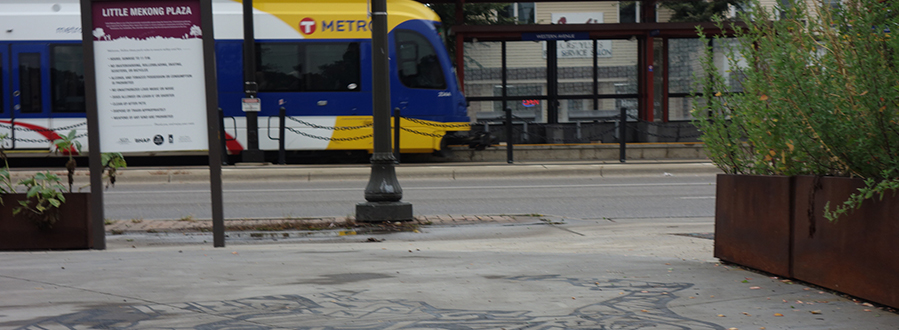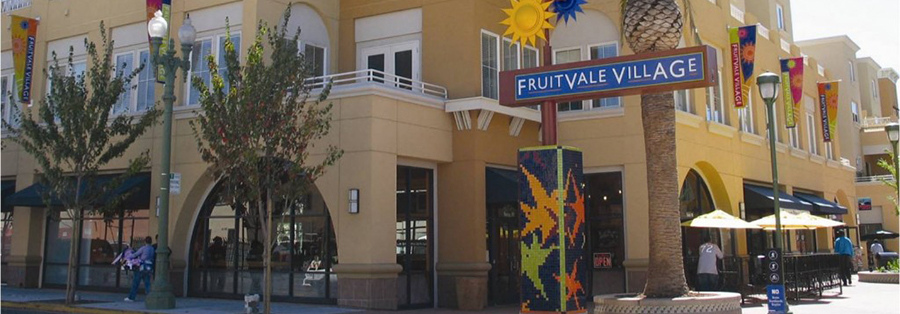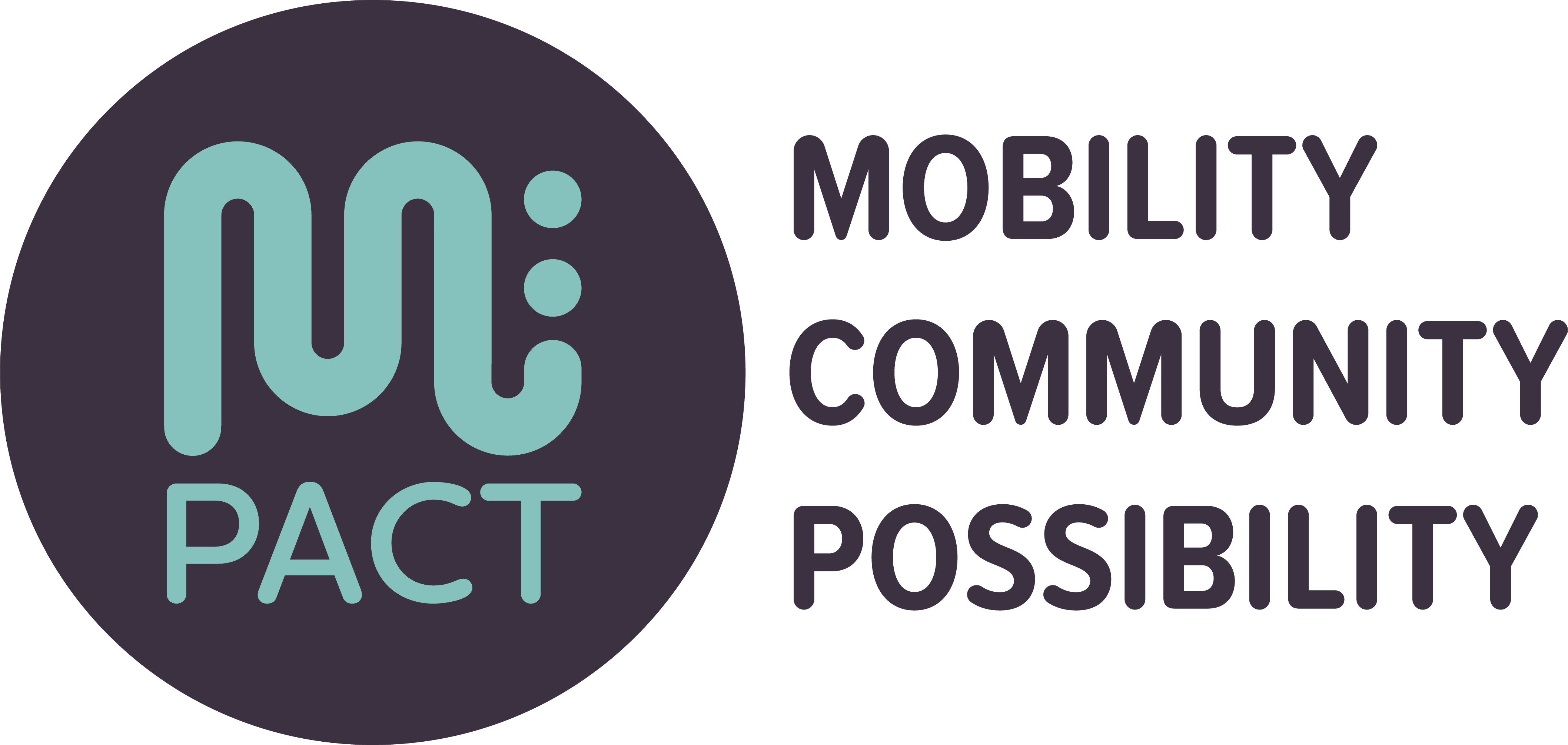Topics: Community Development, ETOD, TOD
Tags:
Originally published on railvolution.org. Rail~Volution is now Mpact: Mobility, Community, Possibility.
Reclaiming the Story of Transit-Oriented Development
A Rail~Volution original essay by Antonia Malchik
![]()
The sole public-private plaza of St. Paul’s Little Mekong district, located at the Western Ave. light rail station, is so small that it’s easy to walk past without noticing. It’s barely one-tenth of an acre set back from a sidewalk and near a restaurant. An intricate mural winding out from a stainless steel water pump decorates the pavement, which is set with a few tables and chairs and bordered by a grove of rustling young aspen trees. The mural, like the plaza, is easy to overlook at first. It represents the Mekong River, spilling down from the Tanggula Mountains in Tibet, through Thailand, Laos and Vietnam – countries where many of the residents of this quiet, unassuming district came from and whose cultures still inform the area’s food, art and sense of community.

Little Mekong Plaza, St. Paul, MN
Little Mekong is in Frogtown, a multiethnic area along University Avenue in St. Paul, Minnesota, with deeply rooted Hmong and other Southeast Asian communities among even older and more deeply rooted African American neighborhoods. It’s an area that has good reason to be suspicious of big transportation projects. Little Mekong sits on the edge of Rondo, a historic African American community whose homes, businesses and civic gathering places were devastated by the building of I-94 in the 1960s.
But this time, according to some community organizers, it was a big transportation project that brought the community together. The coming of the Green Line, the Twin Cities’ second light rail line, along University Avenue ended up revealing strengths and assets that had been hidden for decades.
This result couldn’t have been achieved without intense, determined community involvement and public officials who were open to changing course. When plans for the Green Line light rail first came to the state legislature’s attention in 2006, it was slated to have stops every half-mile along most of the route, but only every mile in Frogtown, an arrangement tailor-made to pass by an area that had already seen decades of disinvestment. At the time, Kathy Mouacheupao worked for Local Initiatives Support Corporation, an organization that connects underserved communities with public and private funding. She explains that the Green Line was meant to be an express to serve both downtowns, the cores of Minneapolis and St. Paul. “So our question was…” she says, “’To serve whom?’”

Coordinating Culture
Transportation projects of the past have often considered communities as an accident of place and time, rather than an organic structure central to human societies. But done right, transit-oriented development can nurture communities, strengthening an area’s history and culture without washing away the people and unique characteristics that have kept these same qualities alive.
![]()
Jonathan Sage-Martinson, a community and economic development consultant, left the St. Paul mayor’s office in 2008 to join the Central Corridor Funders Collaborative, a central point for nonprofits and philanthropic organizations to pool grants then funneled to initiatives along the Green Line. He says that questions like Mouacheupao’s were at the core of the Collaborative’s work. While housing and business displacement were the Collaborative’s prime issues, their efforts went deeper: “What do we need to do,” Sage-Martinson says the Collaborative asked, “in addition to affordable housing, to make sure there’s not displacement, and that people can recognize their neighborhood at the end of it?”
The Funders Collaborative’s role in achieving these two goals was as a kind of go-between for donors who wanted to help, and organizations that needed the funding. They financially backed several initiatives that were key to the Green Line’s success, including the Stops for Us campaign, which succeeded in getting three light rail stops added in the Frogtown area; and Mouacheupao’s work at LISC supporting longstanding arts and culture organizations.
Mouacheupao was instrumental in locating and fostering cultural connectivity along the eleven miles of the Green Line. In 2013, through LISC, she started giving grants to arts and culture organizations that existed before construction started, and building relationships among these organizations. “Some people had never even been in one another’s neighborhoods,” she says. “We knew we wouldn’t have the funding forever, so a peer network would be essential going forward.” Her vision was to discover how all the communities along the Green Line were interconnected, and how they could build and maintain their own knowledge-sharing resources. The light rail had the potential to help shape that community, to be a connector rather than a divider.
Connecting Culture
For that vision to come into fruition, though, those cultural areas first had to be connected physically. The number and placement of stops along the Green Line were dictated according to the FTA’s Cost-Effectiveness Index, which was then based on travel time rather than ridership. The CEI determined the light rail would stop every mile in Frogtown and every half-mile elsewhere.
![]()
The Aurora/St. Anthony Neighborhood Development Corporation – a community development organization active in Rondo and Frogtown since 1981 – launched a three-year advocacy campaign called Stops for Us, demanding that the Green Line add stops to better serve low-income and immigrant communities. Activists with Stops for Us, and other city and county stakeholders with an interest in the light rail’s impact and development – 25 people, all told, financed by the Central Corridor Funders Collaborative – were able to attend that year’s Rail~Volution conference. Serendipitously, one of those attendees ran into Peter Rogoff, then undersecretary of the Federal Transportation Administration, in line at Starbucks. Rogoff sent representatives out to take a look at the project, and in the end the FTA changed several federal cost measures, including the CEI model. The Met Council was then able to provide funding for three more stops along the line, including Western Avenue, where the Little Mekong plaza was eventually built. The city also got on board, providing a $4 million mitigation fund to support small businesses affected during construction of the Green Line to use for marketing and promotion after its completion.
The money funneled to Green Line initiatives through the Central Corridor Funders Collaborative is part of what Mouacheupao sees as a new strategy for small communities and traditionally underserved neighborhoods facing large-scale projects: planning for the long-term future, rather than reacting. Community leaders and transit planners can’t focus simply on placemaking or, say, affordable housing. The plans must be full-spectrum. “If you just focus on the place, the people get pushed out; if you just focus on the people, they want to move somewhere else.”
Defining Culture
In the case of the Green Line, considerations like these opened up space for the area now known as Little Mekong to claim a distinctive identity for the first time.
![]()
The name “Little Mekong” is newly minted, a way for the area’s Southeast Asian residents and business owners to define their neighborhood within the historically diverse Frogtown area. “Little Mekong” was the outcome of an entire year’s worth of conversations within the community led by the Asian Economic Development Association, formed by local resident Va-Megn Thoj in direct response to the light rail proposal and its potential impacts. Displacement and destruction were the biggest worries for residents and businesses, but Thoj realized that fear and resistance to the project couldn’t be their only responses. The light rail would happen no matter what, and he wanted the community to have a say in its development. With AEDA, he spent a full year figuring out not just what the community feared from the light rail, but what kind of vision they had for their own future after its completion.
The public-private plaza was part of AEDA’s “naming and claiming” placemaking efforts, a step in realizing that new identity. For decades, the space where Little Mekong’s plaza now sits was an abandoned meat market. It was a “no-place,” one of those buildings that lurks for decades, deterring visitors and stunting any vision of how the space could be different.
Kao Lee Thao, a local artist, was hired to design a mural representative of the area and its cultural history. After St. Paul used money from its 8-80 Vitality Fund to demolish the meat market and provide development money for the plaza, Thao, with extensive input from the area’s residents, designed the final mural of the Mekong River winding through the vast territory of Southeast Asia. It was wonderful, she says, to be able to give back in such a meaningful way to the community where she’d grown up. A location that people once shunned is now one where they feel invited to linger.

Little Mekong Night Market 2015, St. Paul, MN. Credit: Central Corridor Funders Collaborative
There were many other forces and organizers at work during construction of the Green Line. What they all had in common was a commitment to long-term, hyperlocal engagement that gave residents and business owners a feeling of ownership and pride in their community. They articulated a vision for their shared future that said cohesive, connected communities matter.
The Little Mekong plaza is now central to the annual summer Night Market, a vibrant arts, crafts and food event reflective of night markets common in countries like Thailand. Tens of thousands of people attend the Little Mekong Night Market, traveling in from the Twin Cities’ suburbs to enjoy an area that was once considered rundown and unsafe. The Green Line, originally feared, plays an integral role in its success. Parking in the area is limited, so the Night Market’s organizers promote taking light rail. Metro Transit, a sponsor of the event, provides free passes.
While Frogtown still has a long way to go in building and envisioning its future, the difficulties faced by the Green Line’s construction allowed space for communities like Little Mekong to define themselves and discover their collective strength. The plaza has become home to an intertwined story of resilience, activism, placemaking – of how a community in touch with itself, its identity and its values can adapt in the face of structural upheaval.
Sustaining Culture
Like Little Mekong, Fruitvale Transit Village, located in Oakland, California, along International Boulevard, has also seen tremendous interest in its cultural heritage, in particular its annual Dia de los Muertos event.
“We activate this space for arts and culture all the time,” says Dana Kleinhesselink of the local nonprofit The Unity Council. The Day of the Dead celebration is the largest in the Bay Area, possibly the second biggest in California. Seventy thousand people attended Fruitvale’s 22nd Dia de los Muertos in 2017. It’s marketed as a “BART-able” event, accessible by public transit.
“It’s huge,” says Kleinhesselink, with lots of local nonprofits, artisans and food booths. In addition, The Unity Council commissions 30 local artists to decorate altars throughout the celebration, some as large as 20 feet by 20 feet. Cultivating a sense of ownership in a neighborhood’s identity and future happens through events like these and what Little Mekong’s Va-Megn Thoj calls the “inherent assets” of the community: arts, culture and food. These cultural assets have the capacity to tap into both what makes a community unique and what makes it feel like home.
![]()
Finding and preserving inherent assets is an indispensable part of Fruitvale’s fight against displacement. And it is a fight. “Oakland is ground zero for displacement threat,” said Oakland Mayor Libby Schaaf at the 2017 Rail~Volution conference. “We have the fastest rising cost of housing relative to income of any city in America. So how do we protect against that?”
As with St. Paul and Frogtown, the answer is complex and multifaceted, requiring dedication and hard work, often over decades. The story of Fruitvale Village goes back to 1964, when Arabella Martinez founded an organization now called The Unity Council. Seeing the lack of city services in Oakland’s largely Hispanic Fruitvale neighborhood, she wanted a community-based organization that could mobilize Latino voices and influence in the community. “Arabella was very savvy about where the money is and how it’s impacting the community,” says Kleinhesselink. “She said that the people who have the power are the people who own the buildings. We need to own the buildings.” By 1974, The Unity Council owned a 100-unit low-income senior housing building and another 20-unit building. Those developments were the beginning of The Unity Council’s involvement in affordable housing, but not the end.
When Bay Area Rapid Transit released its plans for a remodeled station in the Fruitvale area in the early 1990s, it was explicit in its aim to protect commuters from the so-called dangerous neighborhood. The station and new parking garage were to be built in a way that blocked the Fruitvale neighborhood’s access to the major thoroughfare, International Boulevard. It denied residents easy access to the BART station, while characterizing the area as a place to be avoided. (The station was the location of the 2009 tragic shooting of Oscar Grant III, whose story formed the basis of the award-winning movie, Fruitvale Station.)
Rather than simply protest BART’s plans as detrimental to the Fruitvale community, Martinez made clear that she understood development was needed, but that it could be done in ways that would lift and benefit the local community rather than metaphorically paving it over. Her vision, Fruitvale Transit Village, came to life because she worked with the California Department of Transportation to set aside transit money for affordable housing. BART, says Kleinhesselink, wouldn’t have been able to get that money itself. Martinez was able to leverage her knowledge of government functionality (she’d worked for a time in President Carter’s White House) to figure out how to get the system to work for long-neglected Fruitvale, rather than against it.

Fruitvale Village. Credit: The Unity Council
The original Fruitvale Village is a mixed-use development, with 47 one- and two-bedroom apartments. Ten are affordable, defined as “affordable for residents earning 35-80 percent of the area’s median income.” The main building is home to the area’s Head Start program, as well as a career center and a library. A 1,500-square-foot Google office connects to Google’s Code Next initiative, where the tech company collaborates with MIT and The Unity Council to introduce Black and Hispanic eighth-graders to computer coding early.
Fruitvale Village, though, is not an overnight success story. That first development, says Chris Iglesias, current CEO of The Unity Council, took a lot out of the organization. It was 15 years before Fruitvale Village reached 100 percent occupancy, significantly delaying later phases of the project. It continues to struggle with financing. Until Iglesias came on board in 2012, the Council was suffering from lack of loans and further investment, in part due to the 2008 recession. During that time, the previous CEO continued conversations with developers on the next two phases of planned affordable housing, a process that Iglesias managed to spearhead and push forward when he came on board. The Unity Council finally broke ground on Phase II of its project in March 2018, currently constructing 94 affordable housing units, and is in pre-development on Phase III, with 188 units. Both sit within the circle of land surrounding the Fruitvale BART station and are part of The Unity Council’s vision of dense, mixed-use, transit-accessible development.
Every unit is sorely needed. The waitlists for affordable housing in the Bay Area are practically stagnant; Iglesias points out that their own staff are struggling to stay in the area. They’ve had nonprofits from San Francisco looking into office space at Fruitvale Village because they simply can’t afford to stay where they are. But The Unity Council’s efforts are having an impact.
Four times as many Fruitvale residents as other Oakland residents use transit to get to work, translating into significant savings: Bay Area households with good access to transit only use 9 percent of their income on transportation, compared to 27 percent spent by households without. A group from UCLA’s Latino Policy and Politics Initiative found that, over 15 years, Fruitvale had increased local residents’ educational achievements (fewer people without a high school diploma, for example) as well as their socioeconomic standing, at the same time maintaining the original ethnic and racial diversity of the area.
Iglesias, who spent years working for BART and another twenty years working for the city of San Francisco, says that BART once had nothing to do with housing. Now “if BART has an opportunity to help us create more housing, they’re going to do it,” and Fruitvale is their model for TOD all over the Bay Area.
The lesson from Fruitvale Village is that equitable change takes a lot of time and a lot of genuine community engagement. It needs an enormous amount of social capital. That kind of equity isn’t built overnight. Scot Spencer, an associate director at the Annie E. Casey Foundation and member of Rail~Volution’s board, says this process is absolutely essential for transit development. “A lot of community engagement involves us coming in, finding out what the community wants, and then going away and doing what we were going to do anyway,” says Spencer. “If people don’t feel like you’ve heard them, they wonder why they bothered. This is where community trust grows or falls.”
But once that trust comes to fruition, transit-oriented development that focuses first and foremost on impacted communities clearly has the potential to mitigate some of the worst effects of recessions and growing inequality.
Culture and Communities
Effectively meeting the needs of traditionally underserved communities requires the multi-pronged approach that has been successful in the projects described here as well as others across the country: Fine-grained, hyperlocal and authentic community engagement; an understanding of how government and funding work; taking stock of inherent assets, particularly in arts and culture; collaborative funding; and elected officials who care about the long-term health and vitality of their communities.
The questions faced by stakeholders looking into TOD and displacement go to the heart of many communities’ struggles today – and it’s not just about affordable housing. How does each community define itself, and how can it use that self-knowledge to cope with inevitable change? How can transit organizations and developers honor that connection? The answers will be unique to every community, but the questions are replicable everywhere. They require everyone involved to understand placemaking is a shared project laden with the vision of who we are and who we want to be.
A transit project brings change to every place. Like a river, it opens up motion and connections to places and people we might never have met. Success, at its core, asks us to get to know each neighborhood. It asks what new, better or faster connections mean for our communities large and small. “We want to be able to recognize our neighborhood and community, even if change comes,” says Va-Megn Thoj about the ongoing work building his neighborhood’s prosperity and resilience in tandem with the Twin Cities’ Green Line. Populations will shift and the places we love will change, but a community that knows itself, that grapples with questions of shared values and home and what a neighborhood should be able to do for its people, will be best placed to adapt to these upheavals. Transit’s potential as a connector and supporter for all of our communities is only just beginning.
![]()
Antonia Malchik is a freelance writer. Her book, A Walking Life, will be published in May 2019.
(c) Antonia Malchik 2018. All rights reserved. First published by Rail~Volution (www.railvolution.org).

